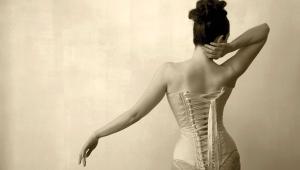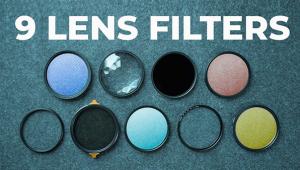Who’s A Big Softie? Deliberately Spoiling The Definition Of Your Pictures Page 2
At its simplest, a soft-focus lens need be no more than a magnifying glass in a focusing mount, and indeed, there have been several (such as the Spiragon) which are just that: typically, a 10-diopter (100mm) focal length. For that matter, you can bodge your own soft-focus lens with a magnifying glass and some form of focusing mount. A bellows is the classic approach, but you can also cannibalize focusing mounts from old and broken (or merely nasty) lenses; you can rig sliding mounts using tubes; or live without focus at all, just Gaffer-taping it all together.
You can control the degree of soft focus by stopping down: a lens that is very soft indeed at f/4 may be surprisingly sharp at f/11. Often, just a hint of unsharpness—“Is it unsharp, or isn’t it?”—can be far more successful than going “over the top” with all the softness you can muster. Certainly, that’s the way I normally use my Thambar and Dreamagon. If you’re using an improvised lens, consider traditional “stops”: round holes cut in metal plates (or even plastic or cardboard) placed in front of the lens. Yes, having the stop in front of the lens does nothing for definition, but hey, remember, we’re talking about soft focus here.
There are several cunning alternatives to conventional round stops. The soft-focus effect depends mostly upon uncorrected spherical aberrations, which are worse at the outer part of the lens than the inner part. The Thambar addresses this in the most direct way of all, with a center spot: a black spot deposited in the center of a clear glass “filter.” With the center spot in place, the image is softer. With it removed, it’s sharper.
The Dreamagon uses an ingenious “radiation symbol” diaphragm, easier to illustrate than to describe, which blanks out part of the periphery of the lens while using another part. The Imagon, and several of its imitators, use a “tea strainer,” a multi-perforated diaphragm with a big hole in the middle and smaller ones around the edges. Again, the idea is to use part of the outer (less corrected) part of the lens as well as the sharp central portion. Each solution has its own effect on specular highlights in the image, as well as the general bokeh, the quality of the out-of-focus image.
Another objection to the most basic 10-diopter lenses is that they suffer from other aberrations, especially chromatic. You may choose to embrace this, as part of their charm, or you may prefer a “real” (and usually much more expensive) lens where this has been designed out.
 |
 |
||
|
|
Going in the other direction, you don’t necessarily need a lens at all for soft focus. Pinholes are of course an option—though many prefer larger formats, at least 6x7cm roll film, rather than 35mm or small digital sensors, for pinholes—and then there are “zone plates” which rely on diffraction rings to form a (soft) image. The great advantage of a zone plate is that it is a lot faster than a pinhole, though still very slow: f/32 is a typical value, but at least this allows easy handheld shots in good light, unlike the f/180 or so that is the normal starting point for a pinhole. The great disadvantage of a zone plate is that it is even softer than a pinhole.
Yet another possibility is to try a truly rotten lens, preferably at full aperture. Very elderly zooms are a good starting point, such as the 90-180mm f/5.8 Yashinon I had in the 1960s, while too-fast lenses are another possibility: my 135mm f/1.8 Porst, which I believe to be the same as the 135mm f/1.8 Soligor, is another. To accentuate their miserableness, add a cheap tele-converter. In the topsy-turvy world of soft-focus images, “worse” may be “better.”
 |
|
|
There is no doubt about it that such styles of photography are not for everyone. Some people really hate any departure from maximum sharpness: not just dislike, but hate, with hysterical reactions to anyone who dares suggest that it may ever work. Others, as already noted, overuse softness until all their pictures are muddy blurs. But sometimes, for some pictures, the right kind of softness can really work. Try it. You might like it.
For further information on the art and craft of photography from Roger Hicks and Frances Schultz, go to www.rogerandfrances.com.
- Log in or register to post comments

















































